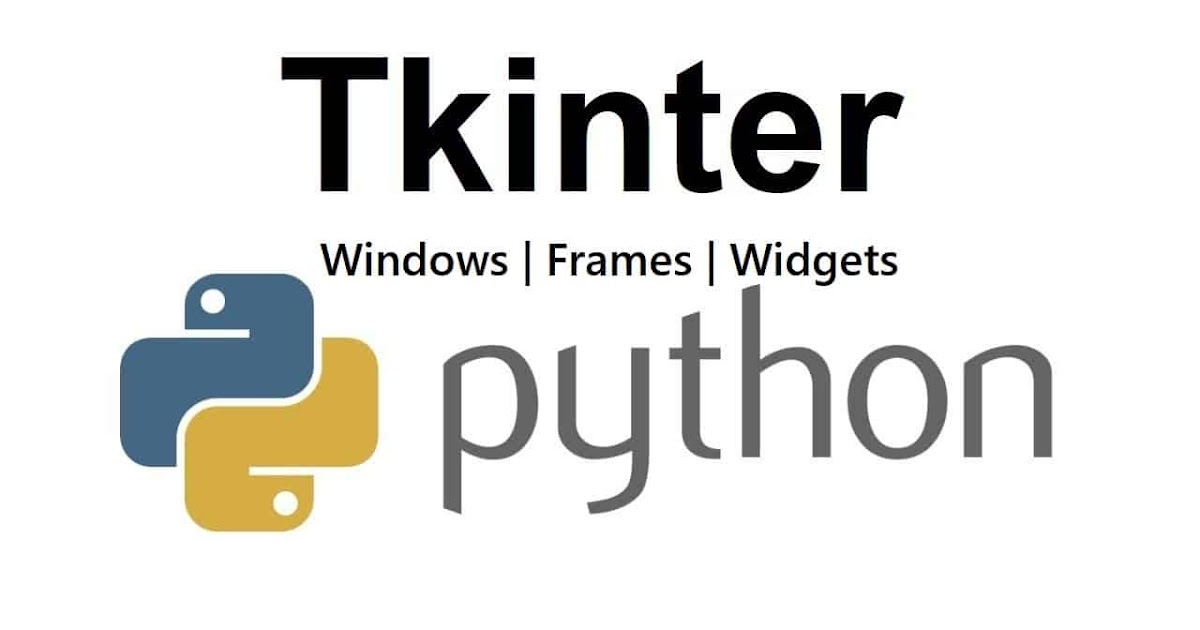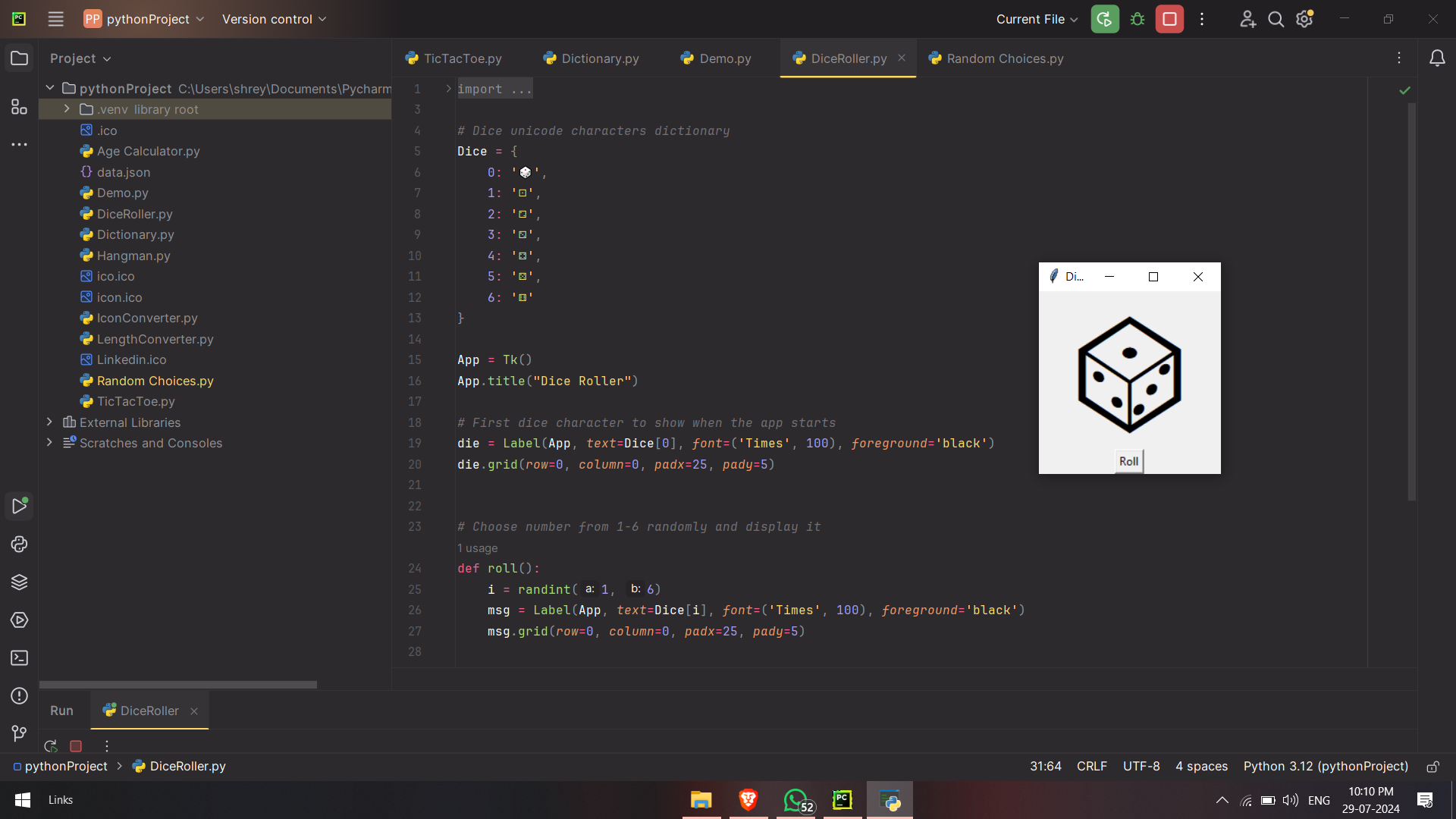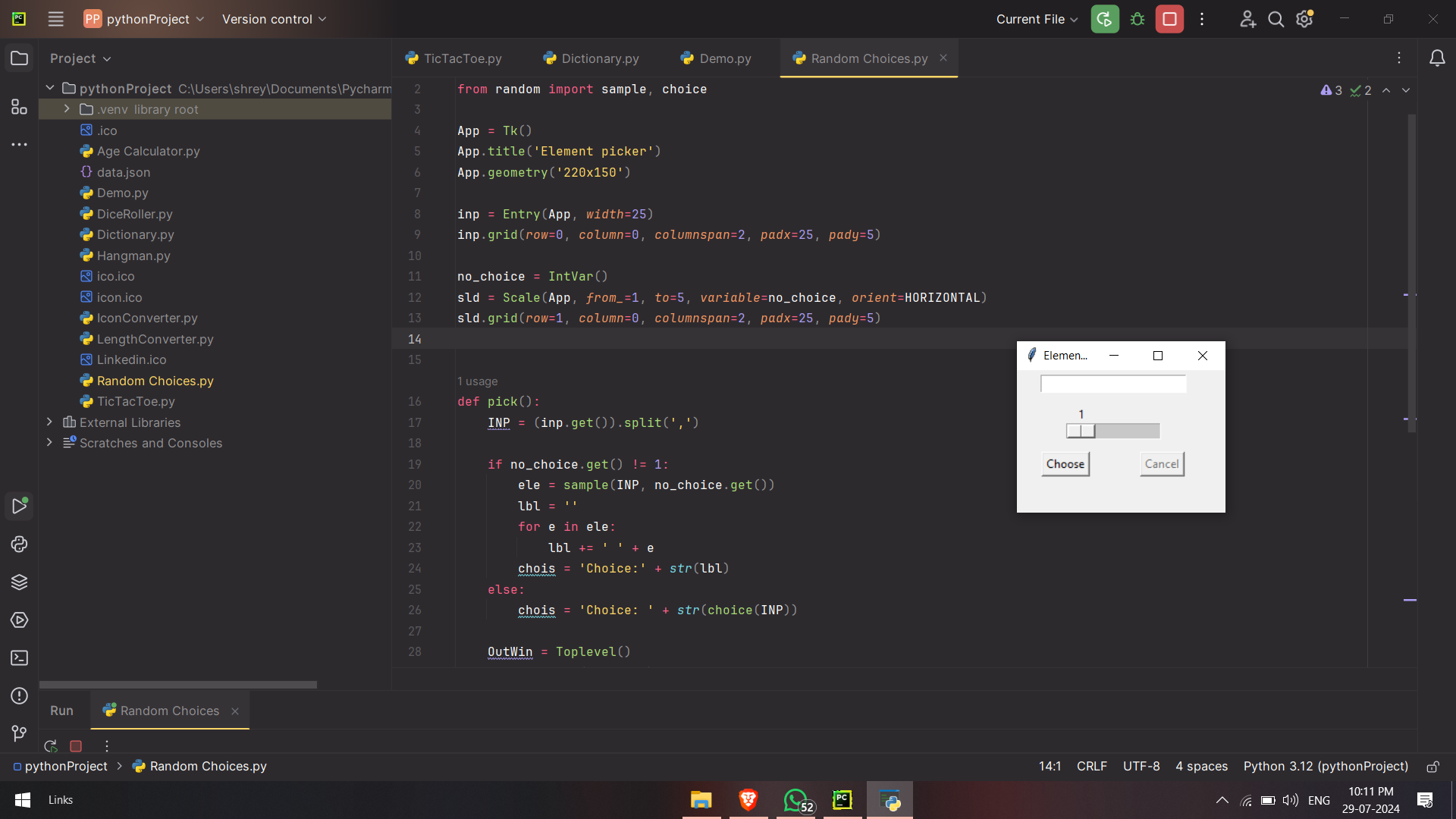Exploring Tkinter: The Go-To Python Library for Creating GUI Applications
 Shrey Dikshant
Shrey Dikshant
Tkinter is one of the most popular libraries for creating Graphical User Interfaces (GUIs) in Python. As the standard GUI toolkit included with Python, it provides a fast and easy way to create desktop applications. In this blog post, we'll explore the features, pros and cons, and real-life applications of the Tkinter library.

Features of Tkinter
1. Widgets
Tkinter offers a variety of widgets, including buttons, labels, text boxes, checkboxes, radio buttons, and more. These widgets can be used to create complex and interactive user interfaces.

2. Geometry Management
Tkinter provides geometry managers such as pack, grid, and place to control the layout of widgets in a window. This allows for flexible and precise positioning of elements.

3. Event Handling
Tkinter supports event-driven programming, allowing you to bind functions to user actions like clicks, key presses, and mouse movements. This makes it easy to create responsive applications.
4. Themed Widgets
With the introduction of the ttk module, Tkinter includes themed widgets that offer a more modern and customizable look and feel compared to the traditional Tkinter widgets.
5. Cross-Platform Compatibility
Tkinter is cross-platform and works on Windows, macOS, and Linux, making it a versatile choice for developing applications that need to run on multiple operating systems.
6. Simple to Use
Tkinter's simplicity and straightforward syntax make it an excellent choice for beginners who want to get started with GUI programming in Python.
Pros of Using Tkinter
1. Integrated with Python
As the standard GUI library for Python, Tkinter is included with the standard Python distribution, meaning no additional installation is required.
2. Lightweight
Tkinter is lightweight and does not require significant system resources, making it suitable for simple and small-scale applications.
3. Easy to Learn
Tkinter's simplicity and extensive documentation make it accessible for beginners, allowing them to quickly learn and start building GUI applications.
4. Active Community
Tkinter has a large and active community, providing ample resources, tutorials, and support for developers.
Cons of Using Tkinter
1. Limited Advanced Features
While Tkinter is excellent for simple applications, it lacks some of the advanced features and customization options found in other GUI libraries like PyQt or Kivy.
2. Outdated Look and Feel
Although the ttk module improves the appearance of widgets, Tkinter's default look can still appear dated compared to modern GUI frameworks.
3. Performance
For highly complex or resource-intensive applications, Tkinter may not be the best choice as it can be slower compared to other GUI libraries.
Real-Life Applications of Tkinter
Despite its limitations, Tkinter is used in various real-life applications, especially for small to medium-sized projects. Here are a few examples:
1. Educational Tools
Tkinter is often used to create educational software and tools for learning programming concepts, mathematics, and other subjects.
2. Simple Games
Developers use Tkinter to create simple games like tic-tac-toe, hangman, and other puzzle games that do not require advanced graphics.

3. Data Entry Forms
Tkinter is suitable for creating data entry forms and applications for collecting and processing user input.

4. Prototyping
Due to its ease of use and rapid development capabilities, Tkinter is often used for prototyping GUI applications before developing them with more advanced frameworks.
5. Utility Tools
Developers create various utility tools such as file managers, text editors, and calculators using Tkinter.
Subscribe to my newsletter
Read articles from Shrey Dikshant directly inside your inbox. Subscribe to the newsletter, and don't miss out.
Written by

Shrey Dikshant
Shrey Dikshant
Aspiring data scientist with a strong foundation in adaptive quality techniques. Gained valuable experience through internships at YT Views, focusing on operation handling. Proficient in Python and passionate about data visualization, aiming to turn complex data into actionable insights.